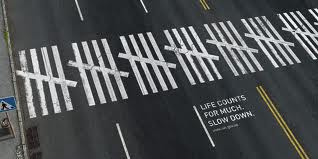In 2007 the Federal Road
Safety Corps initiated and kicked off a policy, the Road Transport Safety
Standardization Scheme (RTSSS).
According to Section
115(1) and (2) of the National Road Traffic Regulation, mandates all transport
operators who engage in
inter-state road transport with up to 5 vehicles in their fleet, to appoint a
Safety Officer and also to comply
with the FRSC requirements on certification, registration and safety officers to build a data bank for ease
of monitoring and to ensure better and safer road usage.
The charter of the
scheme includes:
A. Regulate Road Transportation in Nigeria.
B. Ensure Safe and Standardized Fleet Transport Operation for all.
C. Check the excesses of Transport Operators which often lead to loss of lives and property.
D. Entrench a culture of safety consciousness in organizations and companies with vehicular fleet.
This policy, to me represents one of the best policies I have seen coming from the stables of the FRSC, it is filled with potential and pregnant with possibilities, an attempt by a regulatory body to organize the ever-chaotic transport sector and its sub-sectors. The policy has actually made head-ways especially in the area of compliance to registration, albeit in the organized transport sector since 2010 when the full implementation began and so far they have:
1. 2325 Fleet operators have been registered so far
2. 338 Safety Managers have been trained and many more to follow.
ADVANTAGES
1. Fleet operators are now also involved in investigating accidents and gathering data, thus data becomes robust and integrity of data will be actualized.
2. The FRSC will be able to delve into better research based on reliable and different data sources.
3. It becomes easier to monitor safety on our highways.
4. We begin to get source-data for a transport database.
Etc.
However, policies are not just made for the sake of making it, they are made to address a certain challenge, resolve a certain problem.
"What is not measured cannot be changed"
My Question is:
How has the policy affected the greatest index it was promulgated to address?; The rate of traffic incidents.
The last traffic accident statistic uploaded on the FRSC site stopped at 2006 (why that is so, I cannot fathom) and as such I will refrain from quoting figures in this post.
The FRSC needs to sit down at this point and analyze the policy in order to better realize the objectives of setting up the policy.
1. How has the policy affected RTA (Road traffic accidents)?
2. Is the issue that of compliance?
3. Does the statistics shows that the fleet operators have a lower RTA rate compared to individuals who are not regulated by the charter (as they may not necessarily have up to five vehicles)?
4.Is the policy capable of single handedly reducing RTA rate, or it has to work in conjunction with other initiatives?. If so what other initiatives are prime to the success of the policy?
5. If the issue is compliance, what strategy is been used to enforce and or ensure compliance.
So many questions to be asked, but permit me analyze the policy and the challenges which I feel it faces.
1. COMPLIANCE
The FRSC may need to re-define terminologies, what represents a fleet operator? where do you categorize the numerous vehicles under NURTW and their owners who do not see themselves as a fleet operator because
a. they chose to do so
b. they do not have up to five vehicles.
Does it mean the owner of a vehicle of four (4) under the umbrella (or any other umbrella) of NURTW does not ply the roads or does not contribute to RTA within the highways? these area has to be addressed if the policy is going to have any meaningful effect on RTA reduction, as it were now the policy may not deliver as regards the RTA index.
2. ENFORCEMENT
I am of the school of thought (as written in my first post: RTA root cause analysis) that punitive measures in terms of financial fines may be counterproductive in the long run as people may develop immunities to payment of fines.
The FRSC needs to come up with a strategy that motivates and at the same time punitive, to the extent that the defaulter feels it, take for example if a DANGOTE vehicle defaults and a PEACE MASS TRANSIT defaults, the imposition of the same amount of fine, is relative and DANGOTE may not necessarily feel it as compared to the smaller operator.
In Advanced countries, the fear of safety enforcement is the beginning of wisdom.
3.
MEASUREMENT AND PERFORMANCE
The FRSC needs to measure the policy impact on a regular basis
using clearly defined metrics.
The FRSC is one
commission that is filled with potential, but the leadership needs to do more,
promulgating policies that are truly scientific.


I think this is an informative post and it is very useful and knowledgeable. therefore, I would like to thank you for the efforts you have made in writing this article.
ReplyDeleteRoad safety system